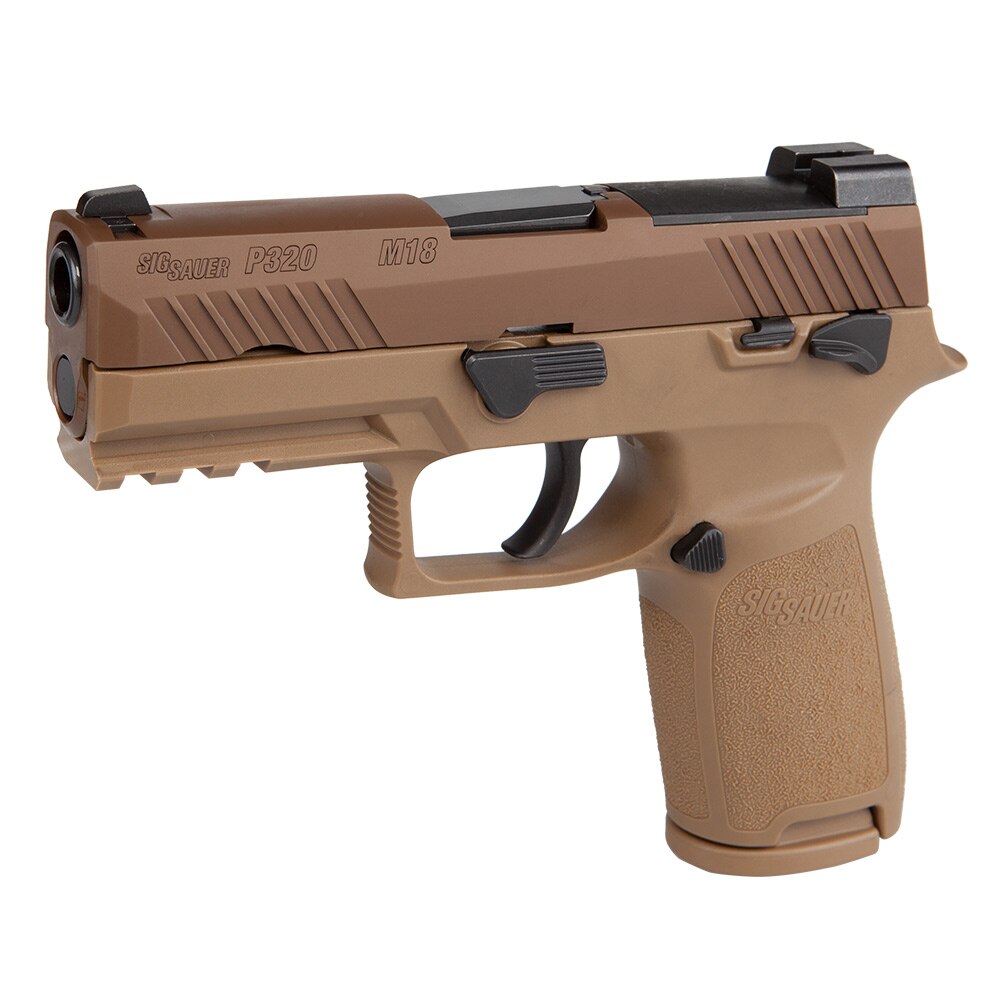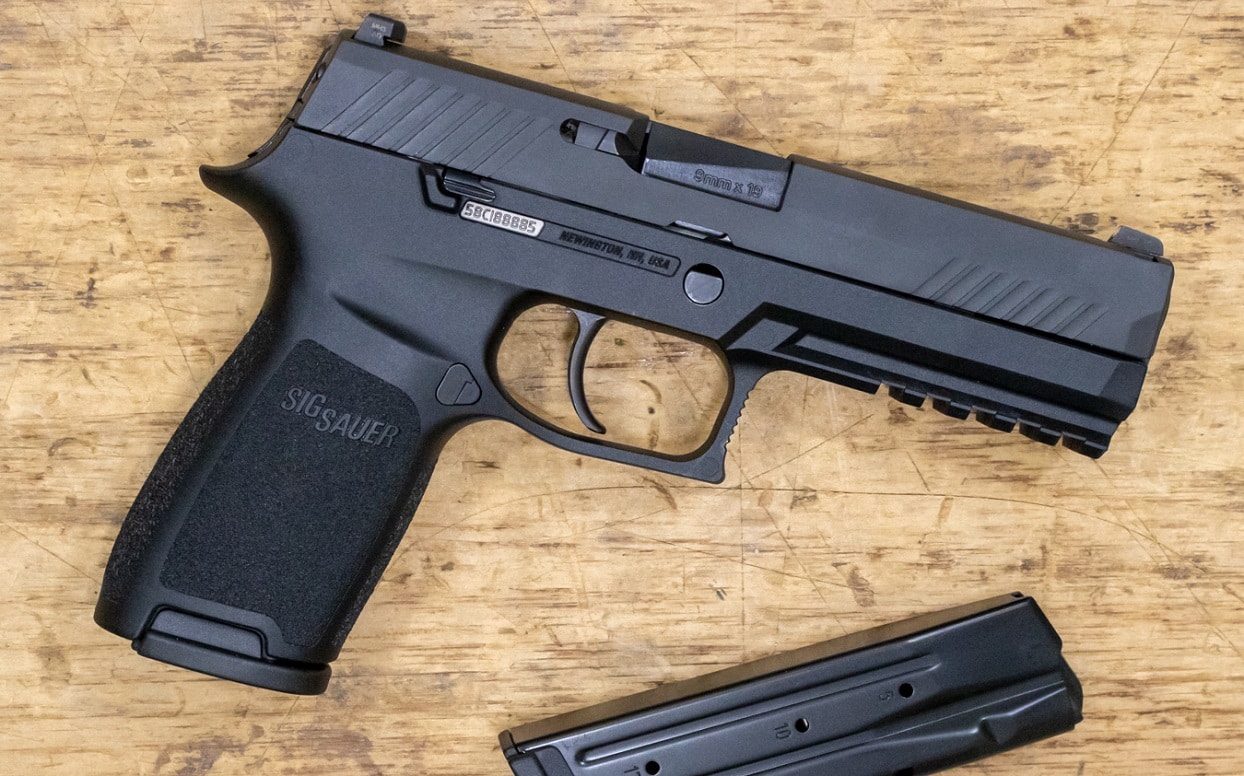Sig P320 Vs Glock 17 - While, we try to put all the guns we review through a standard reliability test that we call "dirt test", which basically involves hitting the gun against the wall and seeing how many shots it takes for it to behave normally after that. For a long time, the Glock 17 Genesis 4 was the king - it had only one function, before it became a good shot. When we got our hands on the Sig Sauer P320 for review, however, we were interested to see if it would open up a Glock. We have recently changed some of our dirt testing methods, digging dirt naturally and using diatomaceous earth (DE) instead of needing to re-test the Glock anyway. Since we also had the P320 on hand, it was only natural to test them at the same time and up.
Note: The Glock 17 used in this test was made in the US at the Glock factory in Smyra, Georgia, not the main Glock factory in Austria.
Sig P320 Vs Glock 17

Two pistols were DE-contaminated and tested twice, once dry and after immersion in water.
Sig P320 M18 9mm
In the dry test, the Sig and Glock each showed strengths and weaknesses, but in reality it was neck and neck. Glock blew a 9-point deficit, losing to Sig who was only 5 points longer. Sig also gave the Glock only 4 shots to fire properly, while the Glock required 8 shots.
However, the Sig had a major problem with the rear-locked slide not releasing - the gun had to be hit very close for it to work. The Glock, although it performed more poorly and took longer to fire properly, did not experience any 'shows' like the Sig's closed slide, so we consider both guns to be on the same level when compared to dry testing. Additionally, a large amount of DE is moved to the front of the Sig when you move it to open the slide, and this may have helped the gun shoot well in 4 shots while the Glock, which has never been hit, took 8 shots.
In the wet test, both guns performed very poorly. The Sig misfired 15 times in the first magazine, although it also misfired the Glock 18 times, although neither gun fired correctly. However, the Sig suffered from 3 malfunctions (the slide locked multiple times in a non-removal counter), requiring close misses to work each time. In contrast, the Glock also does not have major malfunctions.
We gave each gun another 5 rounds to recover from the wet test and the Glock took off, only going 3 rounds to match the Sig 5. However, neither gun was able to fire properly.
Sig Sauer P320 Full Size Pistol 17 Rd 9mm
We decided to give the gun a little shot of something hot: 5 rounds each of Federal Syntech Defense 138gr HPs. Amazingly, both guns fired all five shots without a single hiccup. Now we were curious about the stop, so we discussed and solved the last "problem": 5 rounds each made of aluminum Federal Premium FMJ, because aluminum is not as good as brass but both guns ate those special bullets. I am always happy. Glock emphasized the leadership of the P320 with another clean five-point chain, while the P320 has a dual action FMJ made of aluminum.
Note: The function is not disabled by failure to access the battery, failure to download, failure to charge, and failure to feed the basic information table under the title. Detailed information about the test preparation and procedure, as well as additional photos taken during the test, are also provided below.
In total shots fired, the Sig misfired the Glock 27 times, while the Glock misfired 30 times. However, due to the Glock's complete lack of poor performance/performance, and the fact that the Glock ended up shooting better (10 shots without fail between the Federal Syntech and FMJ made aluminum) while the Sig did not, we conclude that the Glock 17 beats the P320 Carry in terms of reliability in dust and mud.

At the end of the test, we considered using Winchester Made FMJ steel instead of Federal Premium aluminum, but decided against it since the P320 would burn those bullets even if they were clean. This also solidifies the Glock's position as a reliable winner - the Glock eats everything the Sig eats, and it eats the Winchester Forged without a problem.
Glock 17 Vs. 19
However, it is worth noting that the difference in actual reliability is not dramatic. DE-grade cartridges are lightweight and very fine, so they affect the performance of the gun more than exposure to dust or mud. It's quite possible that in real-world use, with real-world dirt, the Glock's edge in reliability would be difficult or impossible to achieve (unless you want to shoot a Winchester Forged, of course).
Remarkable: Not one gun has ever misfired, or misfired in any way. If this test doesn't shut down their attackers' networks, it's doubtful that anything will.
Highlights: Federal Syntech Defense 138gr HP It's a solid defense from a reliability point of view - it quickly turns the gun from hot mess to high performance. However, it's also possible that better defensive bullets would do the trick. More testing is needed to say for sure.
Both guns were stripped and cleaned. After cleaning, the oil is used to pull and assemble the beaters, then the oil is used to route and cut the barrel. Revolvers are cleaned at the same time, on the same bench, with the same tools and cleaning products / lubricants.
Battle Of The Compact Pistols: P320c Vs. Glock 19 Vs. Cz P 10c
The oil used was custom made by one of our employees: a 50-50 mix of motor oil and transmission fluid (both full), and the oil was Battle Born © gun oil.
Immediately prior to testing, each gun was fed a 10-round magazine of FMJ ammunition to 'wake it up'.
Previously, the Dirt Test was conducted using clean, contaminated dirt that was removed from the back of the shooting range. However, we are tired of giving dirt buried under the snow in the winter, and we wanted anyone, anywhere in the country, to reach one dirt to try.

We considered many types of "dirt" and stayed in food grade, well-drained water and diatomaceous earth (DE), because it corresponds to the size of the particles and the composition of the product (unlike sand or dirt) and acts as a light substance (unlike talc powder). Plus, it was mined right here in the US.
Glock 17 Vs. Glock 19
Fire the gun (unloaded, but with an empty magazine) into full gear with about 2 inches of DE. Shoot the gun twice in the side (four times total) to force the other DEs into the ruins. Then, take several piles of DE and run them over the work, one at a time, to make sure everything is well bound.
Once the gun is out of DE, grab the empty mag, grab the full mag, rack, and fire. No cleaning required, no drying process. The number of rounds required for a gun to "fire properly" is to fire a series of bullets that misfire, or until you run out of magazine, at which point the gun fails the test.
The test procedure for part 2 is the same as part 1, except that the gun is cleaned in water in between. The gun is immersed in a bucket of water while the slide is installed and the gun is pulled at least ten times. This cleans the DE from part 1 in a way, allowing the second test to be done without having to go home and clean the gun first. If desired, you can repeat the wet test as many times as necessary by simply soaking, cleaning, and discarding the wet gun in DE as described above.
Sig p320 ankle holster, sig p320 carry holster, sig p320 xcompact holster, sig p320 iwb holster, sig sauer p320 holster, sig p320 retention holster, sig p320 holster, sig p320 compact holster, sig p320 owb holster, sig p320 xfull holster, sig p320 m18 holster, sig p320 concealed holster